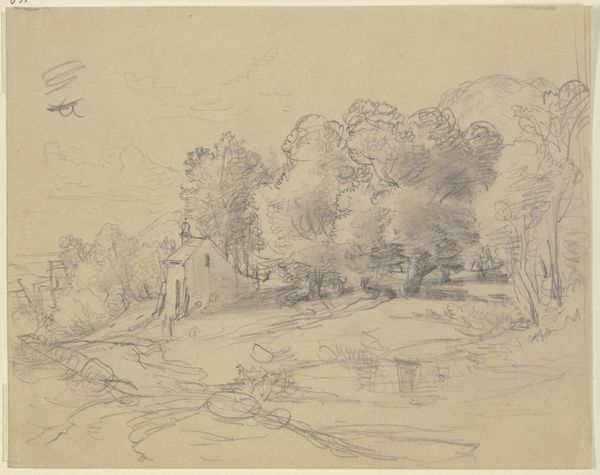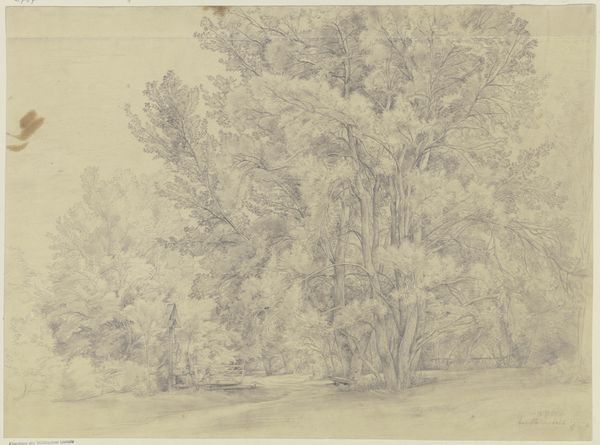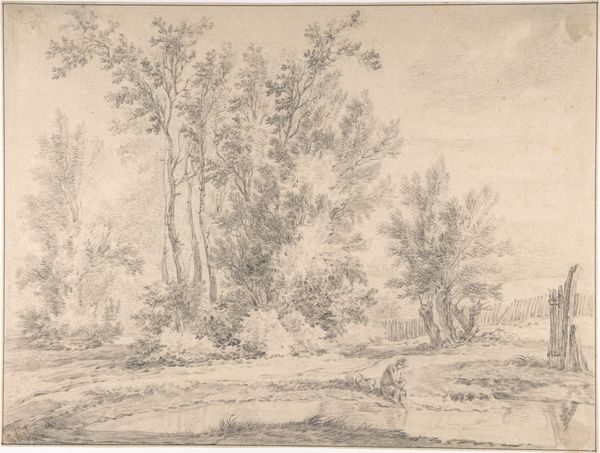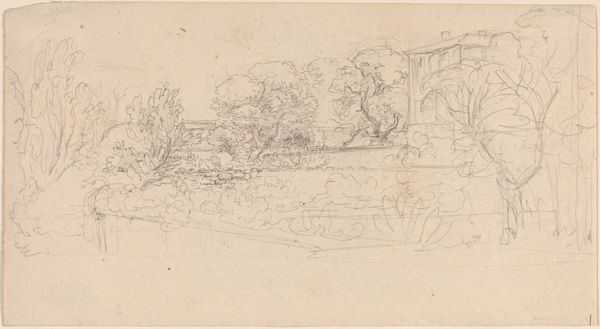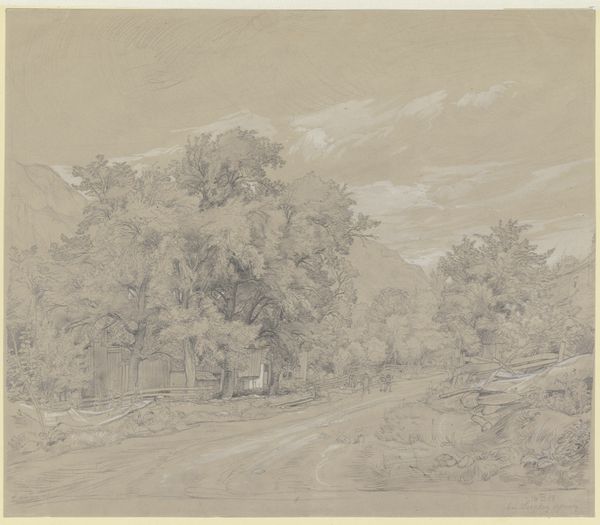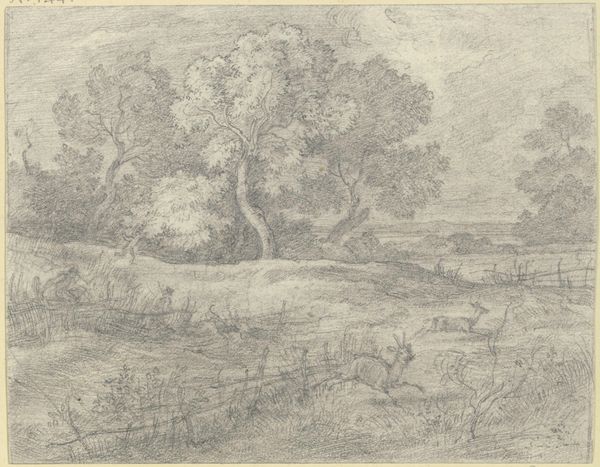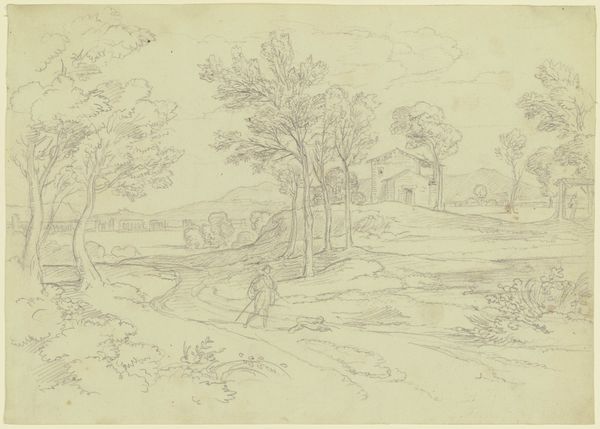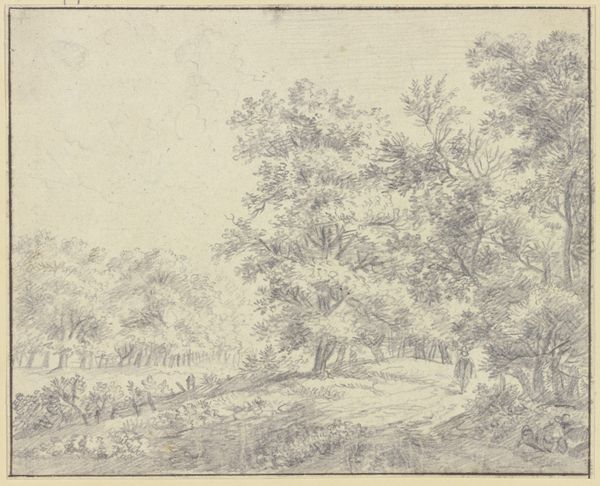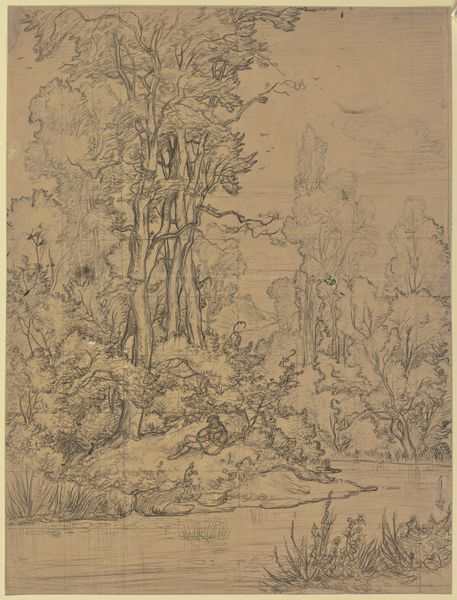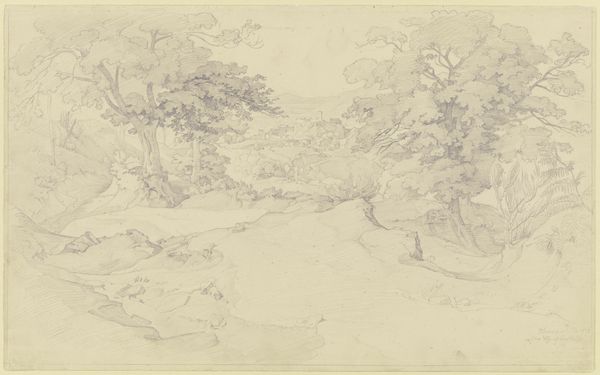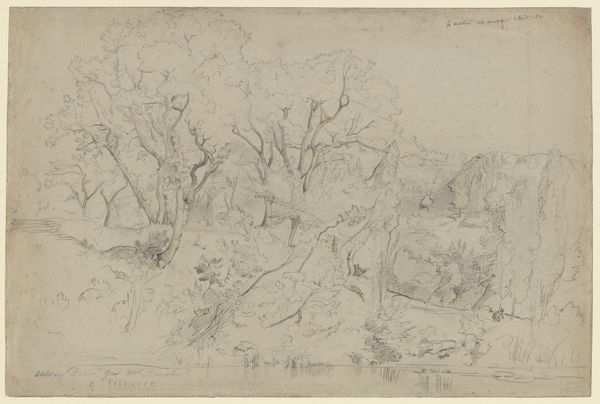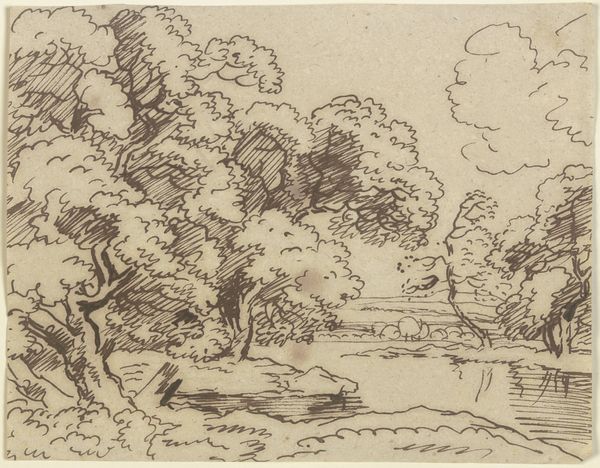
Plateau de la Mare aux Fées. Forest of Fontainebleau 1854
0:00
0:00
Dimensions: 13 11/16 x 18 5/8 in. (34.7 x 47.3cm)
Copyright: Public Domain
Curator: Here we have Théodore Caruelle d'Aligny's pencil drawing, "Plateau de la Mare aux Fées. Forest of Fontainebleau," created in 1854. It's currently held at the Metropolitan Museum of Art. Editor: My first thought is how peaceful it seems. It's just a simple pencil drawing, but the detail in the trees, the light filtering through the leaves… very calming. Almost a study in tonal range through graphite alone. Curator: Indeed. It's interesting to consider d'Aligny’s relationship to the Fontainebleau Forest. He and other artists sought an unmediated connection with nature, turning away from academic historical painting. The forest, therefore, became a site of artistic pilgrimage, reflecting a shift in the social value of nature itself. Editor: Absolutely, and it also signifies shifts in artistic labor. Before mass-produced art supplies, who had access to this level of material to sketch so prolifically from nature? It speaks volumes about leisure and class structures informing who becomes an artist. Was this intended as a sketch for a larger piece, or an end in itself, in other words, as high art? Curator: Good question. While the Salon system still held sway, landscapes such as these helped elevate the genre through sheer technical skill. The precise rendering of foliage, for example, could impress juries while asserting a particular, controlled vision of the French countryside. It's Romanticism filtered through the lens of bourgeoise expectation. Editor: And also the political moment of the Second Empire where artistic taste was heavily molded, controlled, and showcased in exhibitions. Look, I admire the draughtsmanship, the meticulous crosshatching, but how complicit were such images in maintaining a certain social order? Who gets access to even depict this "nature"? Curator: That's the central tension, isn't it? D'Aligny seems to genuinely capture the tranquility of the scene while inevitably participating in the artistic and social conventions of his time. It reminds me of a broader point: Even art that seems untouched is deeply entwined in its moment. Editor: Well, looking at this lovely drawing through those material and social concerns gives me a renewed sense of all the dynamics quietly embedded within it. Curator: It transforms what initially appeared as just a quiet forest scene, no? To see art as never just reflecting taste, but as an active making and reflection of our world.
Comments
No comments
Be the first to comment and join the conversation on the ultimate creative platform.
